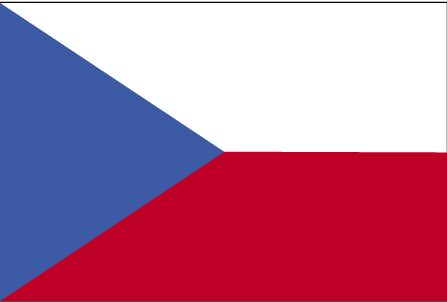
Czech
Republic...
Republic...
Stats...
Overview:
Following the First World War, the closely related Czechs and Slovaks of the
former Austro-Hungarian Empire merged to form Czechoslovakia. During the
interwar years, the new country's leaders were frequently preoccupied with
meeting the demands of other ethnic minorities within the republic, most
notably the Sudeten Germans and the Ruthenians (Ukrainians). After World
War II, a truncated Czechoslovakia fell within the Soviet sphere of influence.
In 1968, an invasion by Warsaw Pact troops ended the efforts of the country's
leaders to liberalize Communist party rule and create "socialism with a human
face." Anti-Soviet demonstrations the following year ushered in a period of
harsh repression. With the collapse of Soviet authority in 1989,
Czechoslovakia regained its freedom through a peaceful "Velvet Revolution."
On 1 January 1993, the country underwent a "velvet divorce" into its two
national components, the Czech Republic and Slovakia. The Czech Republic
joined NATO in 1999 and the European Union in 2004.
Population: 10,241,138
Location:
Central Europe, southeast of Germany
Map references:
Europe
Area:
Total Area: 78,866 sq km
Land Area: 77,276 sq km
Comparative Area: slightly smaller than South Carolina
Capital:
Prague
National holiday:
Czech Founding Day, 28 October (1918)
More Czech Republic Facts...
Overview:
Following the First World War, the closely related Czechs and Slovaks of the
former Austro-Hungarian Empire merged to form Czechoslovakia. During the
interwar years, the new country's leaders were frequently preoccupied with
meeting the demands of other ethnic minorities within the republic, most
notably the Sudeten Germans and the Ruthenians (Ukrainians). After World
War II, a truncated Czechoslovakia fell within the Soviet sphere of influence.
In 1968, an invasion by Warsaw Pact troops ended the efforts of the country's
leaders to liberalize Communist party rule and create "socialism with a human
face." Anti-Soviet demonstrations the following year ushered in a period of
harsh repression. With the collapse of Soviet authority in 1989,
Czechoslovakia regained its freedom through a peaceful "Velvet Revolution."
On 1 January 1993, the country underwent a "velvet divorce" into its two
national components, the Czech Republic and Slovakia. The Czech Republic
joined NATO in 1999 and the European Union in 2004.
Population: 10,241,138
Location:
Central Europe, southeast of Germany
Map references:
Europe
Area:
Total Area: 78,866 sq km
Land Area: 77,276 sq km
Comparative Area: slightly smaller than South Carolina
Capital:
Prague
National holiday:
Czech Founding Day, 28 October (1918)
More Czech Republic Facts...